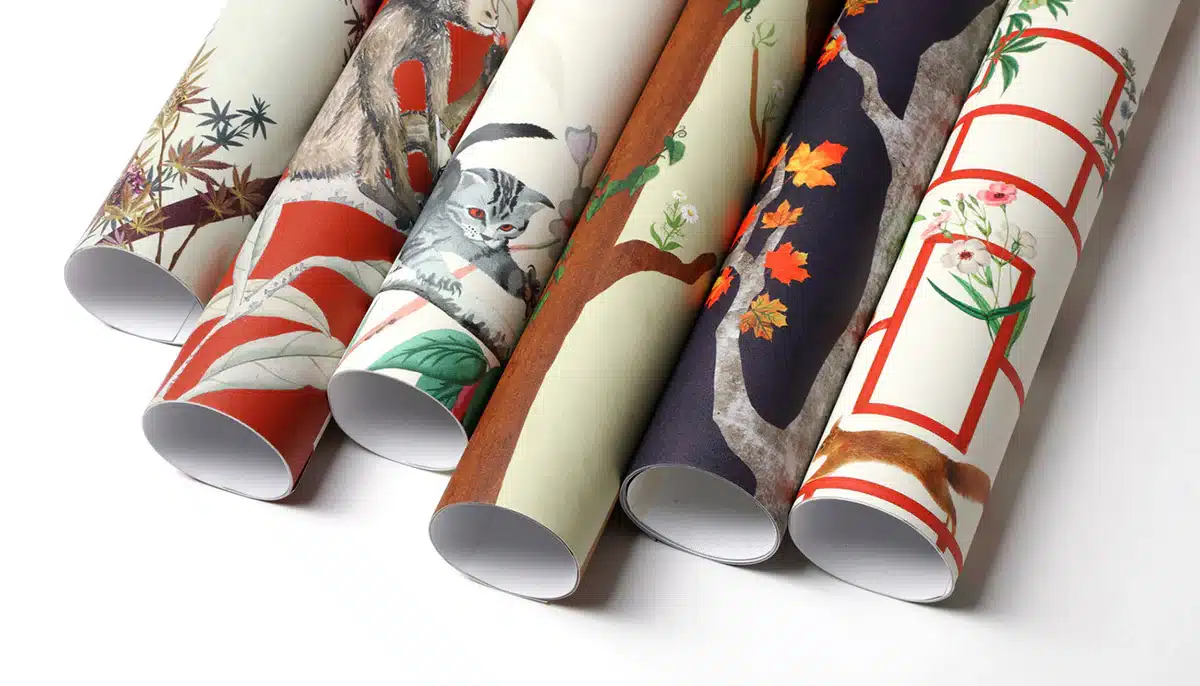Entering the print design industry is an exciting journey from the spark of inspiration to the tangible feel of your finished work. But for new designers, navigating this path can be daunting.
Dave Hopkins, founder of Print Design Academy and a passionate print design educator with 19 years of print industry experience, offers invaluable insights for industry newcomers. His advice on finding your footing in the world of print design includes creating connections in the design industry, the importance of a strong printer partnership, and how to navigate trends like sustainability and immersive print experiences.
“I’ve been fortunate enough to touch just about every part of the printing process, from folding and finishing, running presses, managing customer files, to building relationships,” Dave shares. “The most rewarding part of my professional journey has been educating and empowering designers to bring their dream print projects to life.”
His passion for print design education combined with his unique perspective and expertise led to the establishment of the Print Design Academy. The academy offers a range of educational courses, free downloadable resources, and a library of informative reads and videos to help designers elevate their skills and push their creative boundaries.

Where to Begin
Finding a reliable printer partner begins with forging strong connections in the industry. Dave also emphasizes the importance of relationship-building for growth. Networking in this way can offer a direct line to a community of peers and professionals, help designers stay on top of industry trends, and gain valuable insights into emerging technologies and techniques.
“One effective way for a new designer to start making contacts is to join a graphic design organization like AIGA, DesCan, or RGD,” Dave advises. “Local printers often sponsor these organizations, providing access to a broad network of potential colleagues and learning opportunities.”
US-based organizations like UCDA and SGP are also great resources for designers. Local chapters of these organizations are especially valuable, offering a platform for face-to-face networking and building meaningful relationships. Membership in these organizations sometimes involves prerequisites and fees, but signaling your commitment to professional growth and quality makes it a worthwhile investment.

Printing Partnerships
A key piece of advice from Dave is the cultivation of strong partnerships with printers. Establishing solid printing partnerships helps ensure the smooth transition of your design from screen to print. The guidance of a reliable print partner who understands your unique needs can help you confidently navigate the intricacies of file preparation, ensuring your work is print-ready and set to impress.
The advantages of working with a local printer, as opposed to online mass printing services, cannot be overstated. Dave emphasizes the long-term benefits of collaborating with a local printer can provide personalized attention and expertise tailored to the unique medium you’re designing for, whether it’s packaging, signage, or another format.
Access to sustainable materials is another consideration when searching for a printer. To align with the shift in consumer preferences toward eco-friendly purchases, aligning with a printer who prioritizes sustainable practices can enhance your project’s appeal and environmental footprint.
Evolving Print Trends
Despite the rise of digital media, print design continues to evolve with a clear shift toward personalized immersive consumer experiences and sustainability. Many brands are making environmental consciousness an integral part of their identity to differentiate themselves from competitors and appeal to consumers.
“Designers are now challenged to craft pieces that not only stand out visually but also engage consumers on a deeper level, such as through interactive packaging,” says Dave.
Sustainability is more than a trend; it’s becoming a core component of brand identity. This shift presents a unique opportunity for designers, printers, and marketers to explore alternative materials like hemp and PCW to improve brand perception and align with consumer demands.

Dave’s own experiences highlight the importance of choosing the right materials, with a preference for sustainable options like those from Monadnock Paper Mills, known for their commitment to environmentally friendly practices.
“When I was doing print sales, I always recommended Monadnock papers for sustainable options,” Dave recalls. “They remain my go-to source when I’m looking for recycled or alternative options that offer surface uniformity.”
The journey into print design is filled with endless possibilities, providing a tangible escape from the digital noise that clutters our collective headspace. With the right guidance, resources like Print Design Academy, and a network of supportive industry partners, new designers are well-equipped to navigate this vibrant landscape. Embrace the learning curve, stay abreast of evolving trends, and push the boundaries of your creative potential to make your mark in the world of print design.




